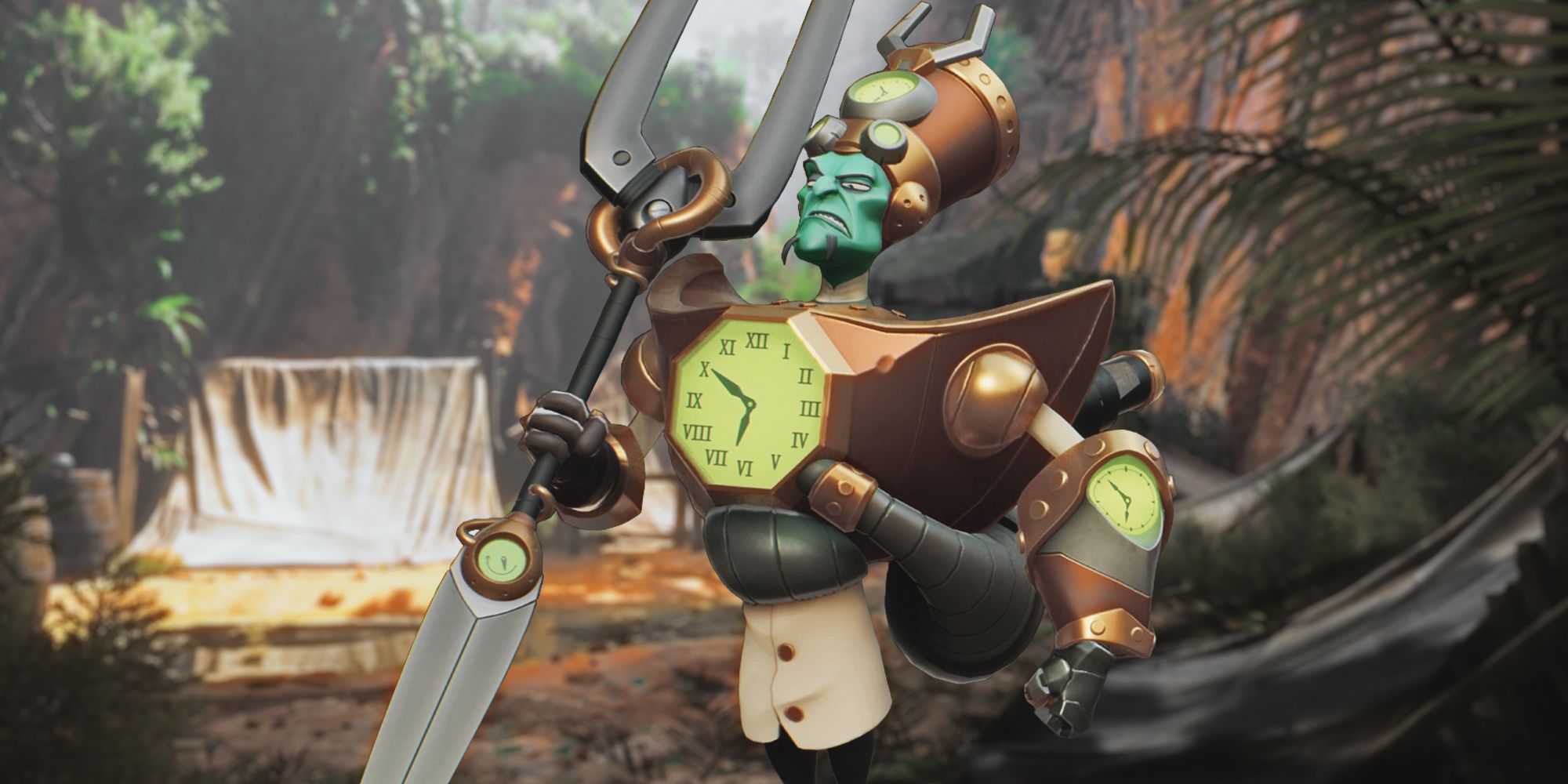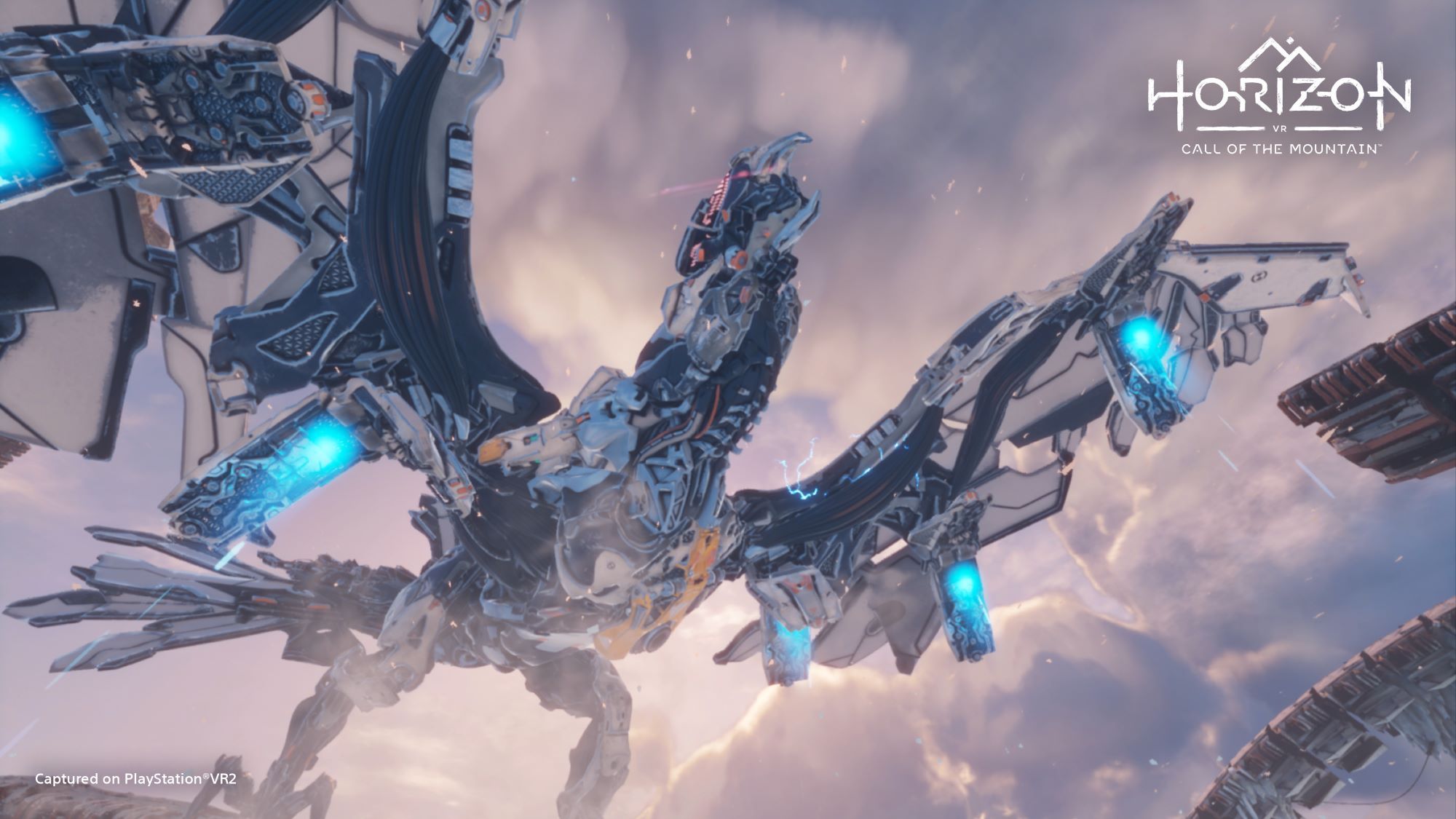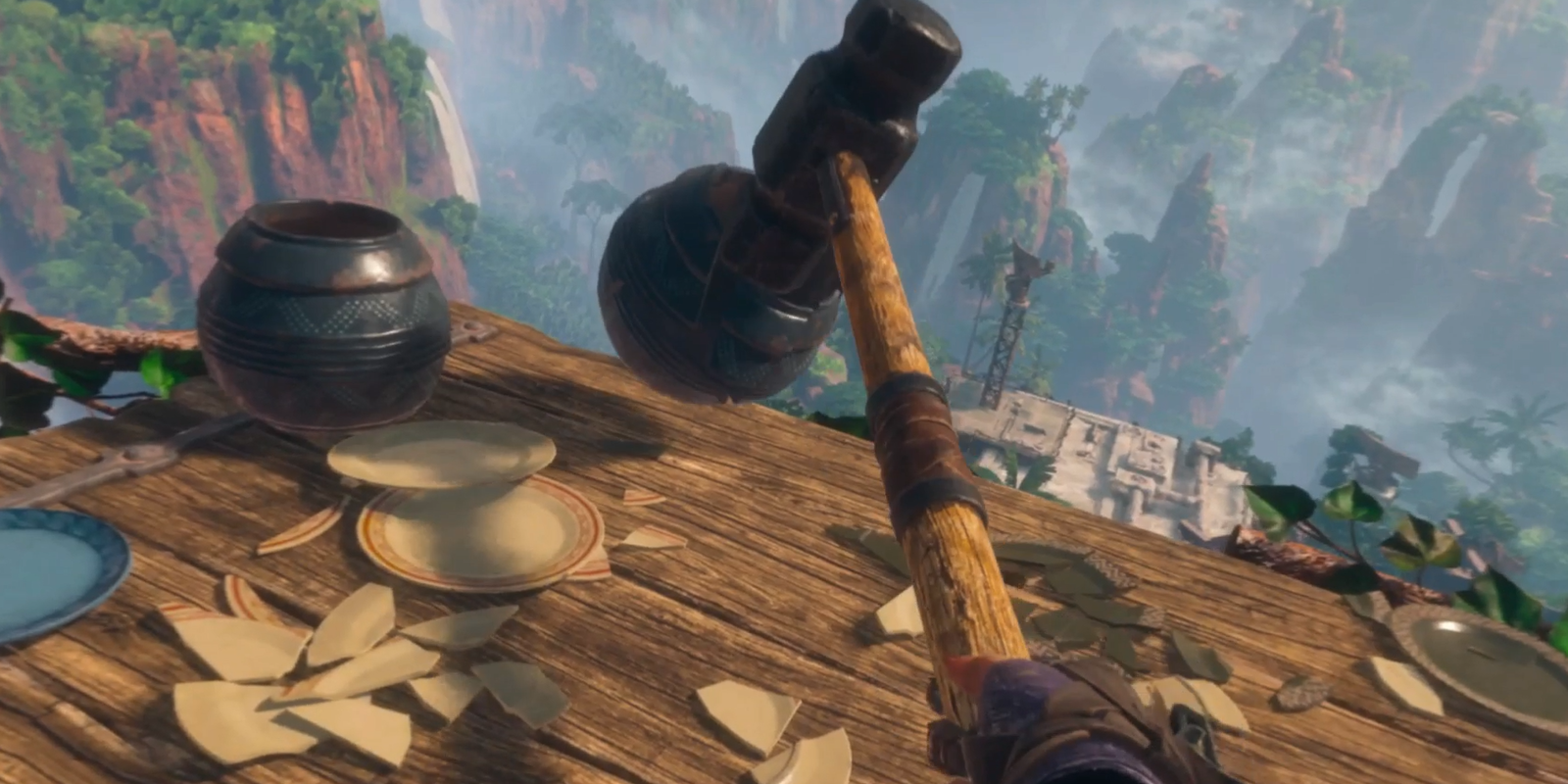Horizon Call of the Mountain's approach to boss battles is as bold as it is baffling. The VR game understands that the medium excels when it lets you immerse yourself in the movement, both by consistently giving you new gadgets to approach climbing varied summits and in letting you control the smallest parts of the world like painting on cave walls or smashing crockery. In the rare boss battles the game throws at you though, this movement is stripped away.
Though firing your bow and arrow is performed physically, including reaching your hand behind your shoulder to collect your next arrow each time, you will be firmly rooted to the spot during these mammoth clashes. It's bold in that I think this will form the foundation of how bigger, less gimmick-driven games will approach VR, and it's baffling in that it just doesn't work.
There are a lot of things, across all the games I might play in any given year, that just don't work. Usually they're not worth giving much of a second thought to - things go wrong because games can be rushed to hit deadlines, because the devs forget that players don't have the skill or insight that they do, because of unsolvable issues with the engine, or meddling from suits to include things an algorithm says players like... it can be a million things. Sometimes a thing is just bad and that's all there is to it.
With Call of the Mountain's boss battles, that's not the case. They're not just bad, never mind you'll get 'em next time, good hustle, take a lap kid. They're a great idea, and so close to being brilliant. But the execution just isn't there, and that makes them far more fascinating to consider.
While the rest of the game lets you explore freely by moving your arms to simulate walking or running, this ability is locked out during boss battles. Instead, you can move both arms sharply to dodge left or right, or move a single arm to strafe much more slowly, although this second mechanic is tempermental and unreliable. Dodge or strafe enough times and you'll come full circle. Since you can only move in two dimensions (never venturing towards or away from the centre of this circle), Call of the Mountain peppers the arena with health (in the form of edible apples), extra ammo, and occasionally heavy artillery. It's clear the developer understands that this is a self-imposed limitation, and tries to make the best of it as a result.
Unfortunately, this never quite makes up for the shortcomings. Because dodging is erratic and strafing unnecessarily difficult to pull off, I would often fly past these resources or dodge my way clean from one side of cover to the other and end up stranded. It feels similar to the platformer battles of the '90s, where devs hadn't quite gotten used to making a major showdown against a single character work in the 3D plane so we had a lot of repeated patterns and attempts to use aesthetics and other gimmicks aside from battling to overstuff the fight.
These days, a lot of action-adventure games, as well as 3D platformers that have kept on trucking, use the foundation of these '90s battles but have learned from the failings and figured out which short cuts work, which don't, and how to make the long way 'round more enjoyable. Making a clash on this scale work in VR is a challenge, and I'm sure that other devs will look at what Call of the Mountain does to help shape their own work, and that we'll see future games standing on the metallic carcass of a Thunderjaw to make their own boss fights better.
I am unconvinced that VR is going to be the next major step for gaming. We've had a variety of active games for years, predating the boom that came with the universally beloved Nintendo Wii. Ultimately, people just want to park their butt on the couch and relax. VR offers a new level of immersion, and if future generations can lower the price to get more people on board, it could grow in relevance, but for most people, gaming means sitting down, chilling out, maybe drinking a beer or eating some snacks, perhaps even with music or a podcast on in the background. A totally immersive experience, where you need to stand in your living room and flail your arms around, is neither an upgrade on nor a replacement for this. It's just something different and extra.
However, what VR undoubtedly will do is grow in both sophistication and range. Call of the Mountain is not just Horizon in VR, as we've seen with other triple-A games when they have ported the console version to suit headsets, but a completely fresh experience in an already established world. We'll see more and more of these titles in the next decade I'm sure, and together they'll start to answer the questions that Call of the Mountain faces up to, but often stumbles with. That makes its mistakes important.



